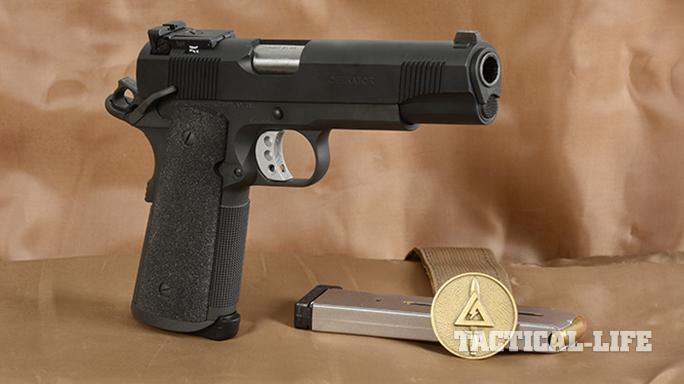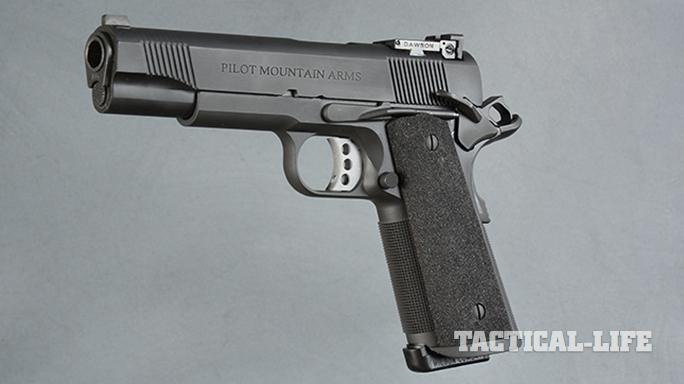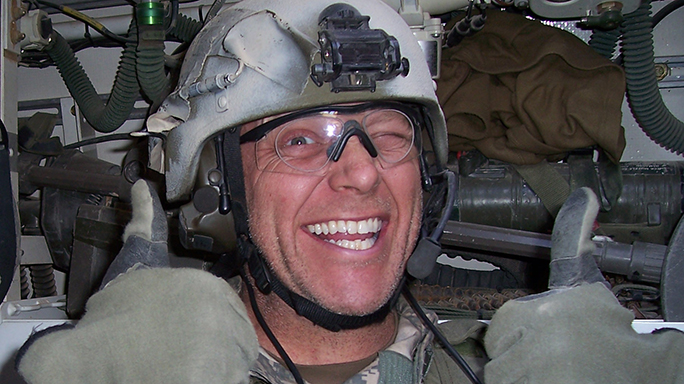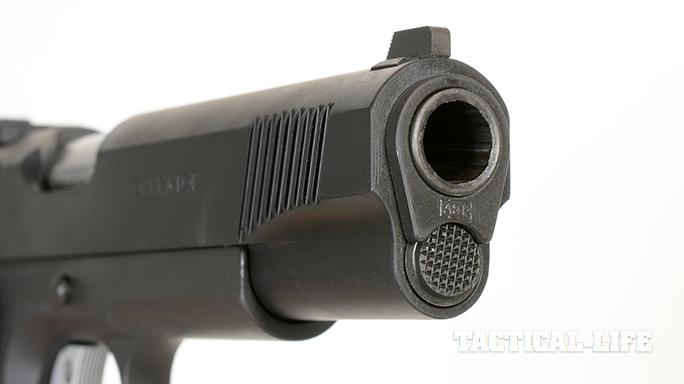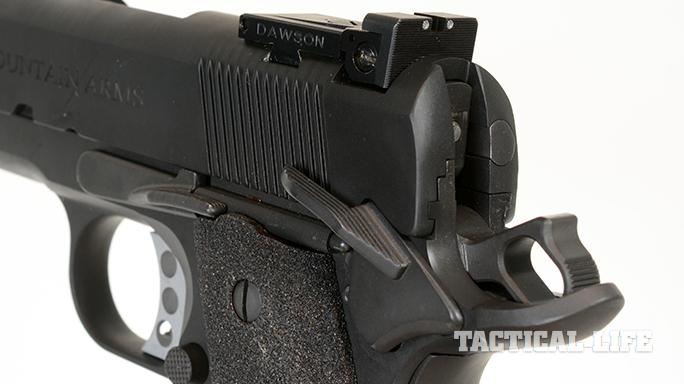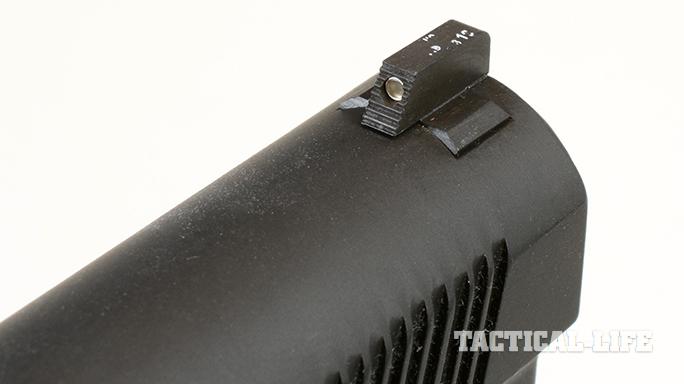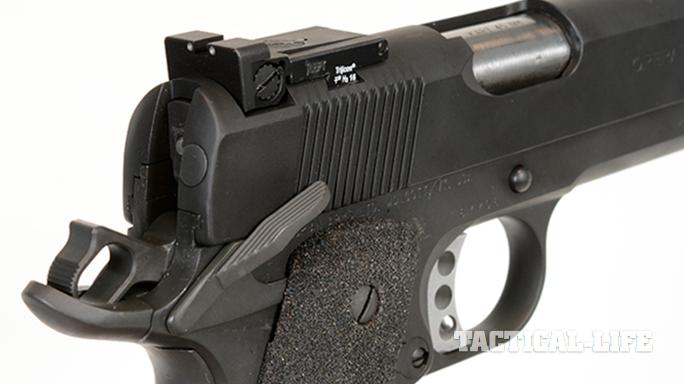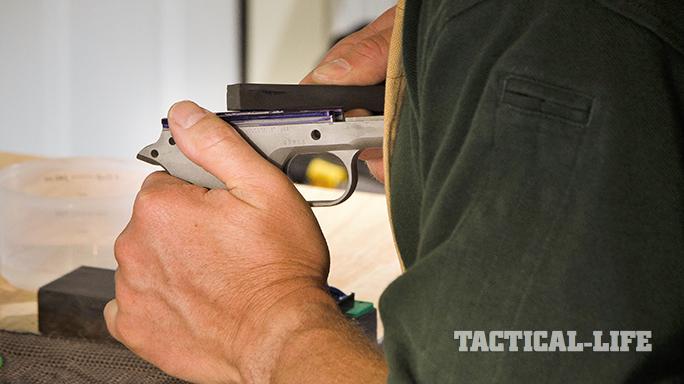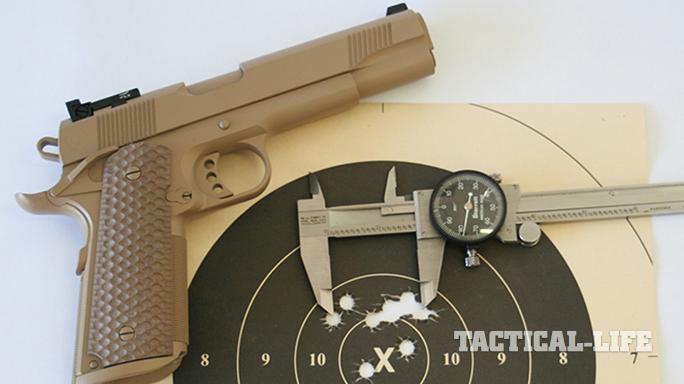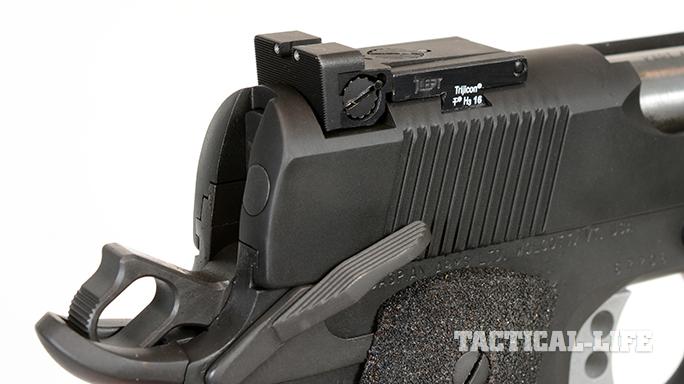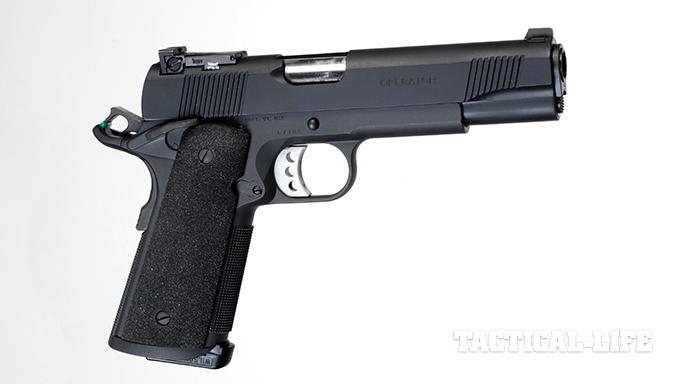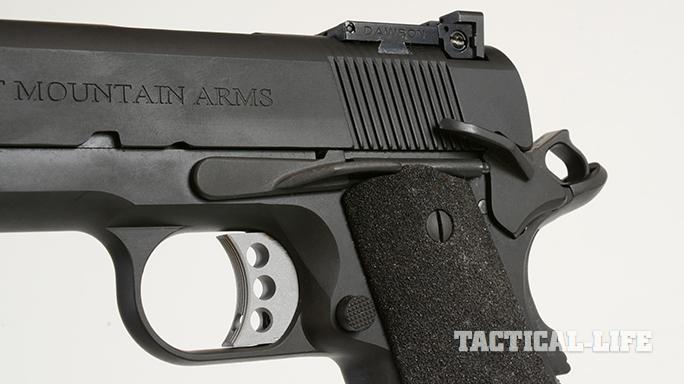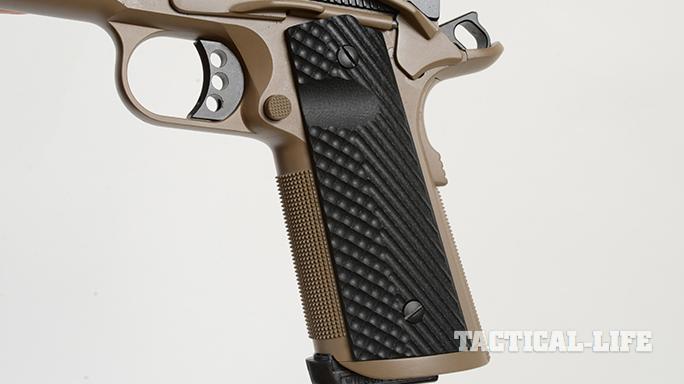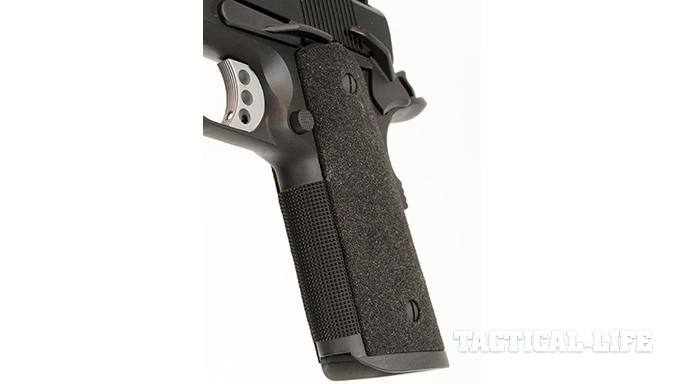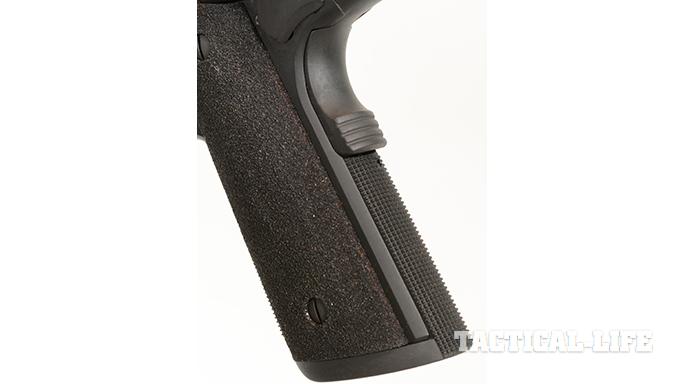In 1991, Brian Searcy was on a desolate section of the Appalachian Trail facing the trial of his life. The final phase of “selection” for Delta Force was a 40-mile ruck march over the rough mountainous terrain. Without knowing the time requirements, the candidate had to hit multiple RV points while carrying a 45-pound rucksack plus a 7-pound rifle. The rule was “Don’t be late and don’t be light!” Within the community, it is known as “the long walk.”
Searcy enlisted in the U.S. Army Reserves while in high school and attended basic training and airborne school between his junior and senior years. He had six military jumps before his 18th birthday. He then volunteered for Special Forces and graduated from the “Q” course at the age of 19. Searcy spent the next four years assigned to the 7th Special Forces Group and was involved in counter- narcotics and counter-insurgency operations in Central America. From there, he assessed for Delta and spent the next 16 years in “The Unit.”
As a result of this article, I have had the opportunity to get to know Brian over the last several months. He is very unassuming, laughs easily and does not take himself too seriously. I asked him to email me some thoughts about his unique career. To quote that email, “I was fortunate to work with the most dedicated, capable and professional group of individuals I’ve ever seen concentrated in any organization…I’ve never seen any other organization that has the sheer depth of talent at all levels. I’ve never worked so hard to be so mediocre in my life, as when I was with the Unit.”
Advertisement — Continue Reading Below
On The Front Lines
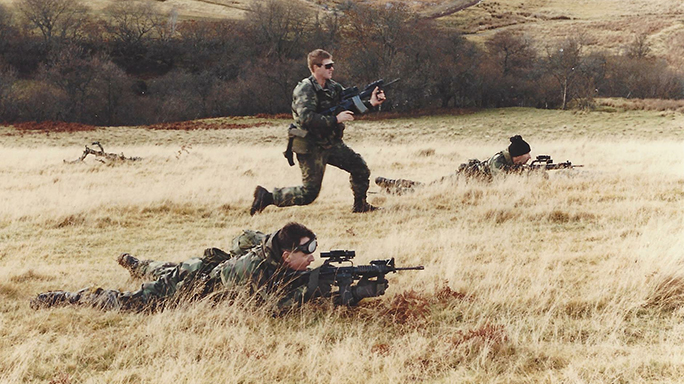
On September 11, 2011, Brian had been with the Unit for 12 years and was a troop sergeant major. Brian related the following story: “In the weeks following 9/11, we began to receive a bunch of shoulder patches from different companies of the New York Fire Department that lost members in the WTC collapses. The patches came through direct contacts and friends of friends. The constant message received was ‘Leave this on the target when you go after those bastards!’ That’s exactly what we planned to do. Five weeks after 9/11, on the night of October 19, U.S. Special Operations forces conducted the initial ground attacks in the U.S. invasion of Afghanistan. After the objective was secured, and we moved from room to room gathering intelligence, we also fulfilled a solemn obligation to the FDNY and the others lost on 9/11. The morning after the attacks, as the Taliban gathered their dead and wounded, they also discovered several hundred 3×5 photos of the iconic image of firefighters raising the American flag above ground zero spread throughout the compound. In the end, we decided not to leave the patches out of concerns for targeted reprisal attacks and instead used the iconic photo, as it represented all Americans. I still have about a dozen of those photos in the same Ziploc bag I carried them in that night.”
- RELATED STORY: The Many Weapons of US Special Operations Forces
When Brian arrived at Delta, the Unit was using match-grade 1911s that were built by “civilian technicians” that were then tweaked by Unit armorers. At the time, these guns were set up with fixed, non-tritium Novak sights. The guns were pretty simple but 100-percent reliable. Initially, Delta’s primary missions consisted of counter-terrorism, hostage rescues and aircraft assaults/recoveries. Later, the missions expanded to doing protective details, intelligence gathering and other low-profile operations. The nature of many of these missions required the operators to blend in and present a lower profile. In this environment, the 1911 was the operator’s primary weapon.
Each operator was issued two 1911s and, when the pistol was the primary assault weapon, most operators carried both. To quote Brian, “The 1911 was revered by the guys!” Much of what the Unit developed came in part from the world of competition, and Delta brought in some of the best shots in the world to teach them. Brian recalled that the first pro shooter his squadron hosted was Rob Leatham. Jerry Barnhart, Jim Clark and others followed. These shooters helped take Delta’s shooting skills to a new level. They also had a direct influence on the pistols that Delta carried. The guns were modified with ambidextrous safeties, tritium sights and improved fire control parts. Brian recalls that the Novak sights, besides not being adjustable, were shooting loose. As a result, the Unit adopted a buried BoMar adjustable sight that eliminated the problem.
Advertisement — Continue Reading Below
Interestingly, Brian found tritium sights distracting and related that they could obscure the target in a low-light environment. He also stated that, personally, he does not care for ambidextrous safeties, having learned to run the pistol without one. For a short time, the Unit even issued a 1911 with a compensator. According to Brian, the guns “rocked,” and the only downside was the increased length. While reluctant to get into specifics regarding pistol standards, Brian stated that headshots from 25 yards and solid body shots from 50 yards were standard. It was not until after Brian retired that the Unit transitioned to guns with rails.
Brian was an instructor in CQB and breaching, and he served as the Unit’s program manager and primary instructor for shooting and hand-to-hand combat. During and after his time with Delta, he has competed at the national level in both precision and action shooting matches. After retirement, Brian returned to Iraq as a civilian and worked with the Joint IED Task Force. There, he and fellow team members were embedded with line units to train the soldiers to identify IEDs as well as the tactics and trends of the insurgents. Returning from Iraq, he cofounded TigerSwan, where he served as the president/COO for six years.
Pilot Mountain Arms
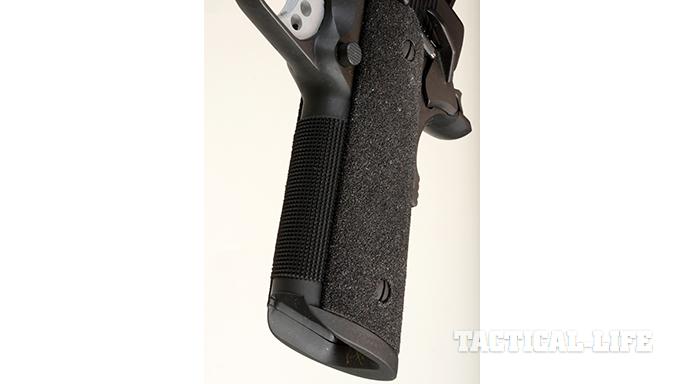
After a full career, Brian opened Pilot Mountain Arms (PMA), a top-notch gun shop that provides a wide variety of gunsmithing services. Brian says he builds guns because “it’s fun!” Several months ago, I saw a post on Facebook by Larry Vickers, one of Brian’s contemporaries, who mentioned that Pilot Mountain Arms was producing a modern rendition of the 1911 carried by Brian while he was in Delta. Being a student of military history, especially special operations, I was intrigued and called Brian to request a pistol for evaluation. A few months later, I received two pistols for testing—one was completely Parkerized and the other had a Flat Dark Earth Cerakote finish.
Advertisement — Continue Reading Below
The Pilot Mountain Arms Operator is based on a Caspian slide and frame like the Delta guns. Brian is quick to point out that there are no MIM parts in his pistols. The frontstrap and Smith & Alexander mainspring housing have 20-lpi checkering. The ambidextrous thumb safety is from Ed Brown while the extended slide release is from Wilson Combat. The safety is fitted after the trigger is installed to ensure proper engagement. A long aluminum, match-grade trigger is fitted and adjusted for a 3.5- to 3.75-pound release.
The beavertail grip safety, also from Ed Brown, is adjusted to disengage when depressed about halfway. According to Brian, “This helps eliminate the problem of the pistol not firing if you miss the grip slightly on the draw or if you don’t have a perfect grip.” An Ed Brown extended mag release also ensures a positive release under less-than-ideal conditions.
While the original Delta guns used BoMar sights, Pilot Mountain Arms uses a Dawson adjustable rear sight that is a clone of the BoMar unit. The sight is recessed and mounted slightly forward of the rear of the slide for protection. Both the rear sight and the Heinie front sight feature tritium inserts for low-light engagements. Cocking serrations are provided at the front and rear of the slide for positive manipulation in harsh conditions.
Advertisement — Continue Reading Below
A Kart match-grade barrel is paired with a Kart bushing. The ejection port has been relieved to allow a live round to be cleanly ejected. The entire pistol has been dehorned, and the edges are softened prior to the final finish being applied. After all is said and done, the pistol is zeroed at 25 yards using 230-grain FMJ ammo. Also, the pistol comes with aggressive Barnhart Burner grips that provide an extra level of control.
- RELATED STORY: 16 Important Questions & Answers About the 1911 Handgun
While Brian will do Cerakote finishes, his finish of choice is Parkerizing. All of the carbon-steel parts in the Operator can be Parkerized. Parkerizing has excellent corrosion resistance, holds oil well and doesn’t affect the tolerances. In addition, it easy to touch up. Brian guarantees that every Operator pistol will shoot groups tighter than 3 inches at 50 yards. He backs this up with a signed and dated test target showing a 10-shot group fired at 50 yards from a rest.
The fit and finish of both of my test pistols was everything I expected. Their slide-to-frame fits had no play and operated like “glass on glass.” Initially, the 20-lpi checkering felt extremely sharp, but I quickly got accustomed to it and it proved to be a non-issue. Upon first examination, I noticed that the rear sight notches were shallower than I am accustomed to on my Heinie Straight Eight or Novak sights. However, on the range, I adapted to the sights and found they indexed and shot extremely well.
Advertisement — Continue Reading Below
Dual-Gun Thunder
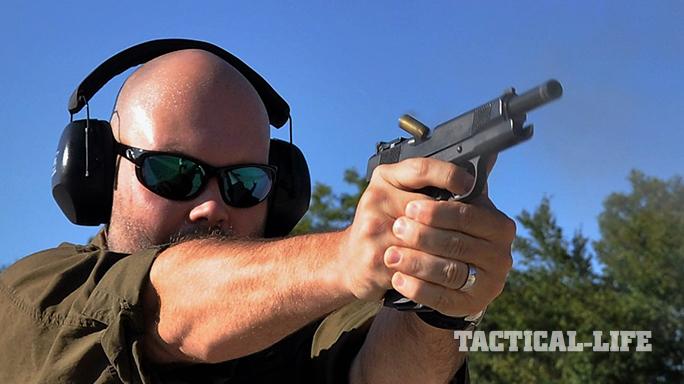
Brian instructed me to shoot the hell out of these pistols. So, while I don’t have the ammo allotment of Delta, I tested the Pilot Mountain Arms Operators with nine different loads. I wanted to see if they were as reliable as Brian advertised, and I wasn’t disappointed. The accompanying table reflects each of the loads from 25 yards. During the testing, I ran everything from PolyCase 118-grain ARX rounds to Wilson Combat’s 230-grain XTPs. Velocities ranged from 1,278 fps for one of the PolyCase loads to 810 fps for Aguila’s 230-grain FMJs. The Operators ate everything I fed them. Fired from a braced, seated position, the groups ranged from 1.25 to 1.75 inches.
I only had one issue with the guns, and that was the Wilson extended slide release. Having shot 1911s for over 45 years, I use the traditional thumbs- forward grip. I found that the thumb on my firing hand tended to ride over the extended end of the slide stop. This prevented me from getting consistent slide locks after firing the last round of a magazine. While I left the black gun in the standard configuration, I wanted to carry the two-tone gun. The Barnhart Burner grips, while great for duty and competition use, are just too abrasive for daily concealed carry. So I added some durable, attractive and functional VZ Operator II grips to the two-tone model.
A Cut Above
Advertisement — Continue Reading Below
With dozens of custom 1911 shops out there, why should you consider Pilot Mountain Arms? First, Brian Searcy has gone into harm’s way, where there was a high probability of a gunfight. His life depended on his Unit-issued pistols. Second, he’s probably put more rounds downrange than any gunsmith in the business, so he understands reliability and how to maintain a high-round-count pistol. Finally, the Pilot Mountain Arms Operator is a very cool piece of history with its roots grounded in a compound at Fort Bragg.
- RELATED STORY: The 22 Best Aftermarket Grips for Your 1911 Handgun
As mentioned, Pilot Mountain Arms is a full-service shop that offers a wide variety of services, products and gear. One of the company’s most popular 1911 builds is a Commander-sized pistol for everyday carry. The shop also builds custom hunting rifles and offers custom packages for Glocks.
We would like to thank Brian for his service with the Unit. And if you want a battle-proven 1911, give Pilot Mountain Arms a look.
Advertisement — Continue Reading Below
Caliber: .45 ACP
Barrel: 5 inches
OA Length: 8.7 inches
Advertisement — Continue Reading Below
Weight: 40 ounces (empty)
Grips: Barnhart Burner
Sights: Tritium
Action: SA
Finish: Parkerized, Cerakote
Capacity: 8+1
MSRP: $3,499
For more, call 919-283-0110 or visit pilotmountainarms.com.
This article was originally published in “Tactical Weapons” May/June 2017. To order a copy, visit outdoorgroupstore.com.
